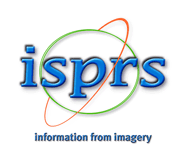A Lightweight Framework for Seamless Integration of Building Energy Simulations into Urban Digital Twins
Keywords: Urban Digital Twin, Building Energy Simulation, Modelica model, Integration, CityJSON
Abstract. Urban Digital Twins (UDTs) and Urban Building Energy Models (UBEMs) are increasingly used to support energy scenario analysis for building retrofits, greenhouse gas emissions reduction, district energy planning, and climate resilience strategies. However, the integration of these technologies is often hindered by data format incompatibilities, limited automation, and insufficient visualization capabilities. This research presents a modular, web-based framework that couples a dynamic Building Energy Simulation (BES) model with a UDT platform using lightweight, standards-compliant formats (e.g., CityJSON). The proposed workflow enables both automated and semi-automated processes, facilitating the visualization of simulation results such as heating demand at both building and district levels. Heating demand and other simulation results are integrated and visualized through an intuitive client-side interface, offering spatial and attribute filtering at multiple scales. The system supports user-provided data and integrates it into an intuitive client interface, enabling spatial filtering, attribute querying, and interactive analysis. Key contributions include the development of preprocessing workflows for data compatibility, integration structuration for simulation outputs, multi-scale visualization capabilities, and analytical tools for what-if scenario analysis. By bridging theoretical modeling frameworks with practical, standards-compliant deployment, this work advances the convergence of geospatial and energy modeling, providing a scalable and interactive tool for energy-aware urban planning. This coupling establishes a bidirectional feedback loop, where UDTs supply detailed 3D geometries, and UBEMs provide predictive energy insights, transforming digital twins into robust decision-support systems.





